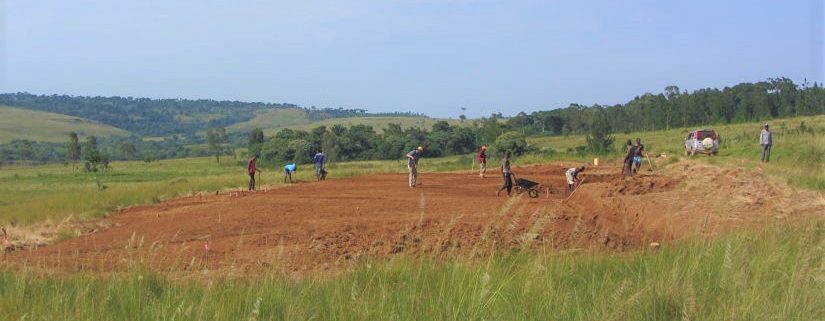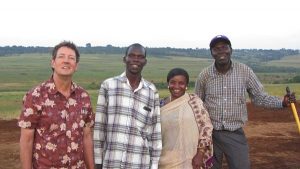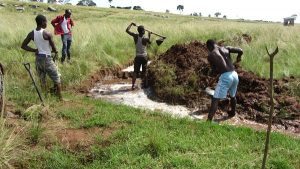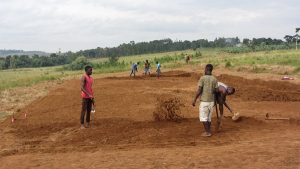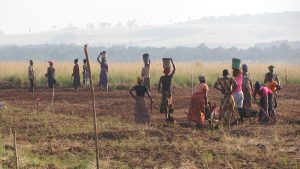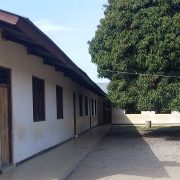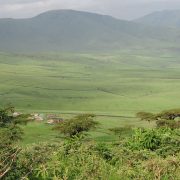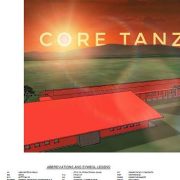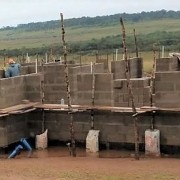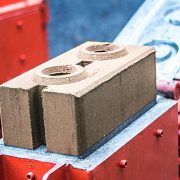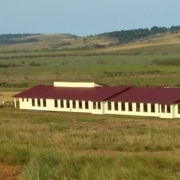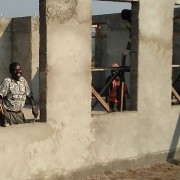Construction Update
At the end of last month we broke ground on construction of Twegashe School! Here’s a run-down of the steps involved in getting to this point.
The team
Our volunteer builder, Bill Suhr, and CORE founder Michael Banobi have been in Bushasha since late May getting construction underway. Before they arrived, a storage shed for construction materials had already been built on the school site and a borehole had been drilled. Many thanks to our man-on-the-ground, Geraz Henerico, for making sure those things got done.
Water
During the first week of June the well crew came to install our pump, so we now have water for construction. We’re using a generator temporarily to power the pump, but we’ll eventually be installing solar power to replace the generator.
Speaking of water…Unusually heavy rains at the end of May revealed some drainage issues that we wanted to resolve before beginning construction. To fix these issues, Michael and Bill recruited a crew of young men from the village to dig drainage ditches that will divert water around the school building area.
Site preparation
The next task was determining precise locations for the teachers’ duplexes and school buildings. This required lots of thought to position the buildings in a way that would minimize the amount of cutting and filling required, since all of this work would be done with only shovels and hoes. Fortunately, our project manager, Mike Tully, was in Bushasha volunteering during this stage of the process, so he could help with all the measuring, calculating, and thinking—he’s an engineer so this was right up his alley!
Once the layout was determined, the crew began leveling building pads for the teacher’s houses. Because all this business of completely straight lines and perfectly level surfaces is new to these village workers, lots of stakes and tape and string were required to define the task. The final step in the leveling process was for Bill to drive over the surface with our SUV to pack down the loose dirt.
As work proceeded on the sites for the teachers’ houses, the women’s co-op (many of the same women who so effectively leveled the sports field for us back in October) began leveling the pads for the school buildings. The women worked the early morning shift, beginning just after dawn and returning home mid-morning to tend to their household and family responsibilities. Despite the limited hours, they finished the task within a few weeks.
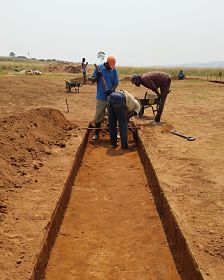
Digging trenches for the Phase I classroom building
Foundation trenching
The next step was to dig foundation trenches, which have now been completed for the Phase I classroom building (four classrooms, teachers’ offices, cafeteria, and kitchen) and one teacher duplex.
CSEBs
Our plan had been to use some of this excavated dirt as a start for making compressed stabilized earth blocks (CSEBs). However, here we faced a bit of a disappointment…
A problem with many soils for making CSEBs is that they have too large a clay component. But the soil at the school site is quite sandy—a feature we had thought would be a benefit. We had the soil tested on our last visit, and were told that it was suitable for making these blocks. However, when Bill did his own testing, armed with the knowledge and the soil-testing kit that he had acquired during his week-long training in Dallas, he discovered that our soil doesn’t have a large enough clay component to make CSEBs successfully. With too low a clay content, the newly-formed wet blocks will not hold together properly. Bill wasn’t able to figure out a practical way to add clay, and bringing in ALL the soil from another location was also not practical.
So we’ve had to abandon our plan to use CSEBs, at least for Phase I. Our hope is to perhaps figure out a solution by the time we begin Phase II. If we can’t, we’ll make our block machine available to brick makers somewhere else in the village where the soil is more suitable, so they can use this technology for building homes instead of using firewood to bake bricks.
Concrete blocks
Instead of CSEBs, we’ll be using concrete blocks for Phase I of Twegashe School. Even the teachers’ duplexes will be made from concrete blocks—wood framing is not an option in Bushasha because of potential problems with termites. We had to custom-order concrete blocks, since the locally available blocks do not have holes for inserting rebar. Our block-supplier in turn had to order a machine to make blocks to our specifications. That machine has arrived in Bukoba, and we are expecting our first delivery of blocks on August 9.
Sand and gravel
In preparation for foundation work and for pouring the concrete slab, we needed to locate sources of sand and gravel. By good fortune, there’s a suitable sand supply on village land just off the edge of our property, which the village chairman said we are welcome to use. There’s also a good source of gravel available to us on nearby village land, but in the form of boulders which need to be broken into gravel-sized pieces. The people of Rwangono Village, just down the road from Bushasha, are known for being good at this task, so Michael hired a 12-man crew from Rwangono to prepare the gravel for our construction project.
Skilled construction workers
While directing all of this activity, Bill and Michael have also been meeting with and interviewing builders, since we will need skilled labor from outside the village to carry out many of the construction tasks. They found a suitable candidate, and have reached an agreement with him to provide a skilled crew for Twegashe School construction. But since his crew will be coming from town, too far for a daily commute, they will need a place to stay. Fortunately, a rough structure out of corrugated steel will meet their needs. That structure is almost complete and will be ready when they arrive next week.
Official blessing
Last month we reached an administrative “holy grail” of sorts—a letter from the Tanzanian Ministry of Education giving us official permission to build a school. So from here on out it’s full speed ahead with construction, still on track to reach our goal of opening for the first class of kindergartners in January 2020!

